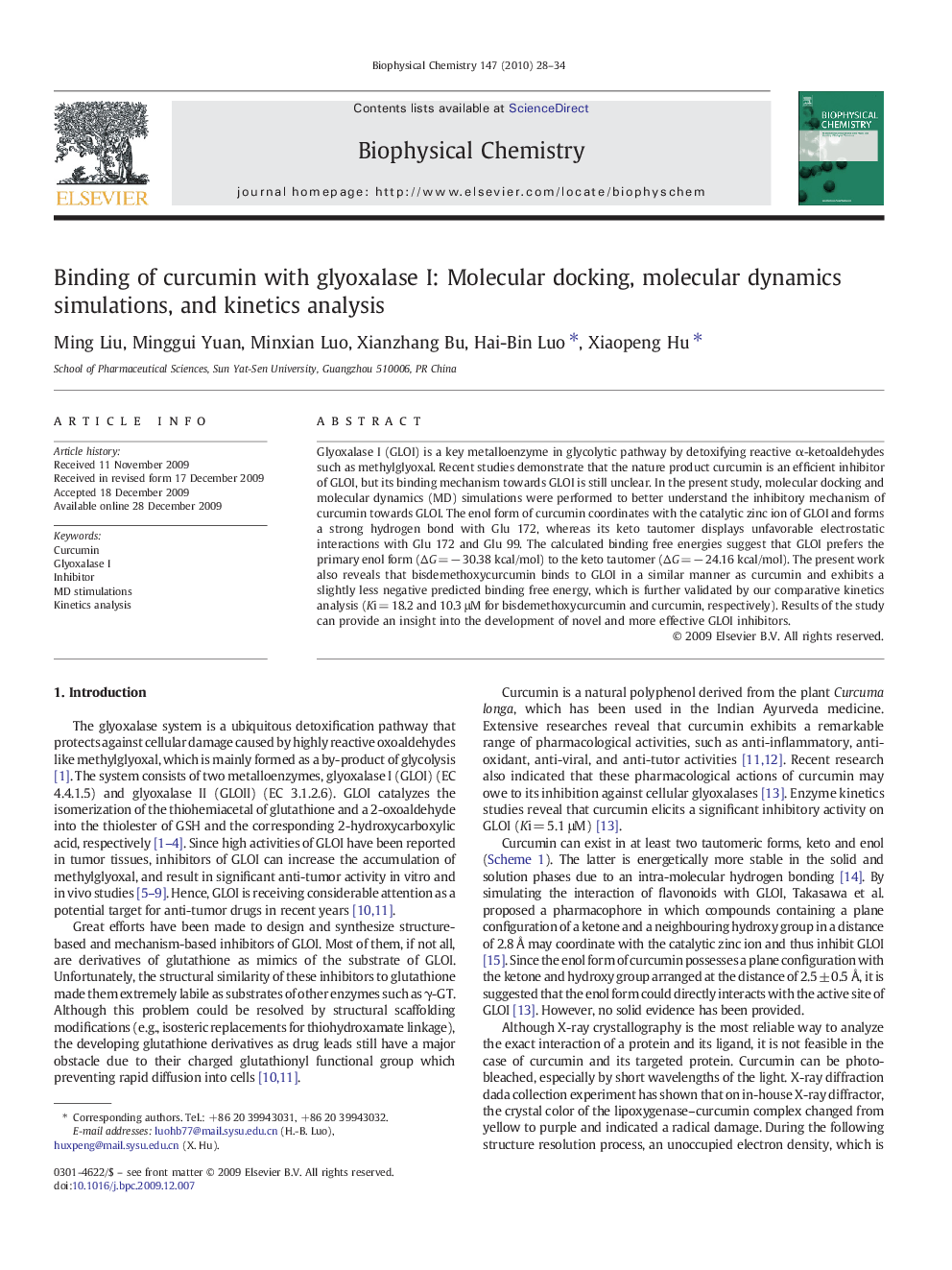| Article ID | Journal | Published Year | Pages | File Type |
|---|---|---|---|---|
| 5371747 | Biophysical Chemistry | 2010 | 7 Pages |
Glyoxalase I (GLOI) is a key metalloenzyme in glycolytic pathway by detoxifying reactive α-ketoaldehydes such as methylglyoxal. Recent studies demonstrate that the nature product curcumin is an efficient inhibitor of GLOI, but its binding mechanism towards GLOI is still unclear. In the present study, molecular docking and molecular dynamics (MD) simulations were performed to better understand the inhibitory mechanism of curcumin towards GLOI. The enol form of curcumin coordinates with the catalytic zinc ion of GLOI and forms a strong hydrogen bond with Glu 172, whereas its keto tautomer displays unfavorable electrostatic interactions with Glu 172 and Glu 99. The calculated binding free energies suggest that GLOI prefers the primary enol form (ÎG = â 30.38 kcal/mol) to the keto tautomer (ÎG = â 24.16 kcal/mol). The present work also reveals that bisdemethoxycurcumin binds to GLOI in a similar manner as curcumin and exhibits a slightly less negative predicted binding free energy, which is further validated by our comparative kinetics analysis (Ki = 18.2 and 10.3 μM for bisdemethoxycurcumin and curcumin, respectively). Results of the study can provide an insight into the development of novel and more effective GLOI inhibitors.
